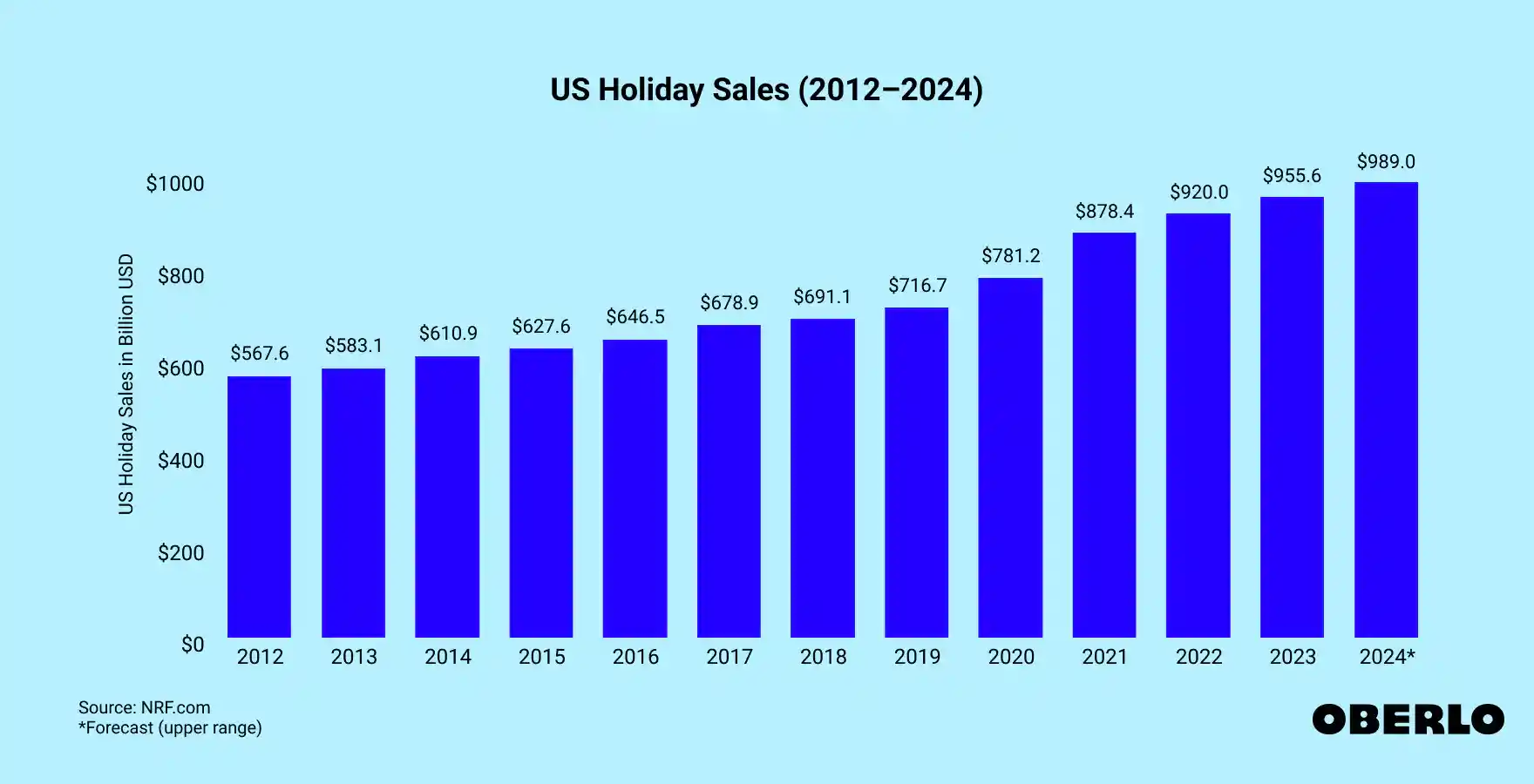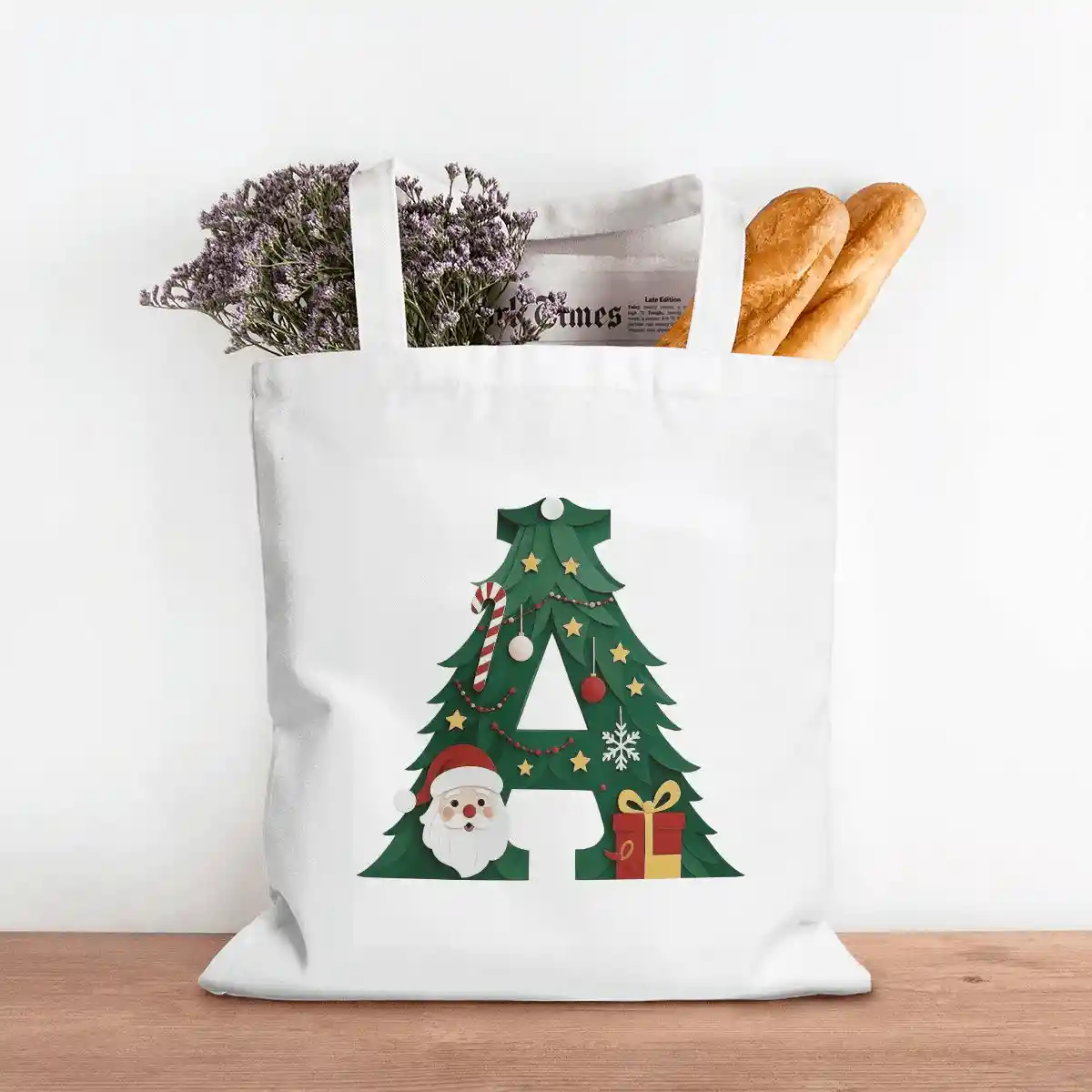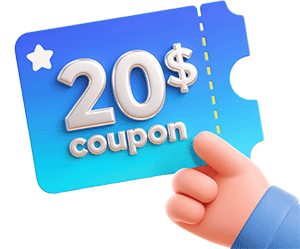
The holiday season is one of the most competitive — and rewarding — times of the year for businesses. With shoppers everywhere looking for unique gifts and memorable experiences, smart holiday marketing ideas are more important than ever.
In this post, we'll share 20 creative and actionable strategies to help your business capture attention, engage your audience, and boost sales in 2025 — all while spreading some festive cheer along the way.
What Are the Benefits of Holiday Marketing?
Holiday marketing offers you a unique chance to grow your business at a time when people are naturally ready to spend.
Over the past decade, U.S. holiday retail sales have consistently risen, reaching about $989 billion in 2024. That's a huge opportunity to capture attention and increase revenue.
It's not just about sales, though. Holiday marketing can also:
- Strengthen customer loyalty by creating memorable experiences
- Increase brand awareness as more people notice your business
- Boost engagement on social platforms when your campaigns get shared
Another benefit is the emotional connection it builds. People associate the holidays with warmth, giving, and celebration.
By being part of that season, your brand becomes part of their positive memories.
In short, holiday marketing isn't just about short-term gains—it helps position your brand for long-term growth while tapping into one of the busiest shopping periods of the year.

20 Effective Holiday Marketing Ideas to Try
1. Launch Limited-Time Products
Offer products only available for the holiday season. For example, if you sell mugs, create a winter-themed design exclusive for December.
Highlight the time limit in your website banners and social posts. Limited availability encourages quick action and helps you test new designs without long-term commitment.
Track which items sell fastest and which audience segments respond most.

Print On Demand Coffee Mug (11oz) (Made in USA)(Submit Shipping Label) - PrintKK
2. Use Holiday-Themed Bundles
Combine complementary items into a holiday bundle. A skincare brand might pair moisturizer, cleanser, and hand cream as a "Winter Care Kit."
Promote the bundle as a ready-made gift solution. Highlight the savings customers get compared to buying items separately.
Share photos of the bundle being unwrapped to show value and inspire sharing on social media.
3. Offer Personalized Gifts
Personalization makes your products stand out. For instance, custom-engraved jewelry or monogrammed tote bags feel special.
Allow buyers to add names or messages easily during checkout. Emphasize the emotional impact of personalized gifts in marketing emails and social posts.
Ensure production and shipping timelines are clear so gifts arrive on time.

Custom Canvas Tote Bag (Made in USA)(Submit Shipping Label) - Print-On-Demand - PrintKK
4. Partner with Influencers
Collaborate with influencers who align with your brand to reach new audiences.
A fitness brand could work with a health influencer to showcase holiday gift sets.
Ask influencers to create authentic content featuring your products in everyday settings. Highlight their posts on your channels to increase credibility.
Measure engagement, traffic, and conversions from each partnership.
5. Run Countdown Campaigns
Build excitement with countdowns leading up to holidays like Christmas or Valentine's Day.
Share daily deals, tips, or holiday trivia on social media or via email.
Countdowns create urgency and encourage repeated visits. You can even gamify the countdown, giving small rewards to customers who engage each day, increasing interaction and brand recall.
6. Highlight Gift Guides
Create curated guides like "Gifts for Him," "Gifts for Book Lovers," or "Budget-Friendly Options."
Include your products and explain why each item is a great choice.
Share the guide via email, social media, and your website. Gift guides simplify decision-making for buyers and position your brand as a helpful resource rather than just a seller.
7. Offer Early Access for Subscribers
Give your email subscribers a head start on holiday sales or exclusive products.
For example, allow access to your Black Friday deals a day before the public.
Promote early access as a reward for loyalty. Early access builds anticipation and can boost your subscriber list as people sign up to avoid missing out.
Track conversions to see how much early access increases sales.
8. Create Festive Packaging
Unique holiday packaging adds perceived value. If you sell candles, package them in seasonal boxes with festive patterns. Eco-friendly wrapping appeals to conscious buyers.
Use packaging photos in your ads and social content to show customers what they'll receive. Packaging can also become part of your unboxing experience, encouraging social sharing.

Custom Black Jar Scented Candle (6oz) - Print-On-Demand - PrintKK
9. Promote Gift Cards
Gift cards are relatively straightforward yet extremely potent gifts for the holidays. Sell them on impulse for time-pressed shoppers.
Add themed designs and limited-time bonus amounts, such as "Buy $50 and get an extra $5." Gift cards also help to induce future purchases and provide assurance for repeat business.
Ensure they are easy to buy and redeem both digitally and physically to attract all shoppers.
10. Incorporate Holiday AR Filters
AR filters let users interact with your brand digitally. A home decor brand could create an AR filter allowing users to visualize your holiday decorations in their own living room.
Promote the filter on social media and encourage users to share screenshots.
Interactive experiences boost engagement and social sharing, making your campaign more memorable than static posts.
11. Launch a Holiday Giveaway
Do a giveaway using your product to get people's attention and grow your followers. Ask followers to tag a friend and explain why they want your product.
This approach is often very effective. Freebies encourage early engagement and extend the reach organically.
12. Offer Free Shipping Promotions
Free shipping is a powerful incentive during the holidays.
You might offer free shipping on purchases over a minimal amount or only during the holiday timeframe.
Feature it in banners, emails, and product pages. Customers usually add more to carts to meet the purchase minimum, so your average order value increases.
Follow which promotions have the highest conversion rates to optimize future campaigns.
13. Host Virtual Holiday Events
Generate online experiences such as a workshop, webinar, or live shopping event. A craft brand might offer a DIY ornament tutorial.
Offer step-by-step guidance and naturally introduce your products for purchase. Immersion through audience interactivity can create community.
Record sessions for future use or share best parts on social media to maintain the hype.
14. Use Social Media Challenges
Create a fun, easy-to-join holiday challenge. For instance, ask followers to post a photo of their decorated workspace using a specific hashtag.
Encourage sharing and participation by offering a small reward. Challenges increase engagement and generate user content you can repost.
Keep rules simple and visually appealing to maximize participation and brand visibility.

15. Implement Scarcity Tactics
Show out-of-stock or low-stock status clearly. A tech brand might label products "Only 5 left" or "Ends midnight tonight."
Scarcity results in a sense of urgency and leads to faster purchase decisions. Mix in a bit of social proof, such as how many people have viewed or purchased. This amplifies the effect.
16. Collaborate with Other Brands
Collaborate with similar brands for co-promotions. A coffee maker may join forces with a bakery to sell a "Holiday Coffee & Treats" package.
Cross-promotions introduce new people to your brand and deliver added value to customers. Cross-promote posts on social media and emails to allow both brands the greatest visibility.
17. Highlight Seasonal Storytelling
Tell holiday stories that the brand ties into. Post behind-the-scenes content, customer stories, or community activities.
Storytelling creates an emotional connection that helps your customers remember who you are. For added impact and ease of sharing, incorporate imagery and brief videos.
18. Use Interactive Emails
Enliven your emails with polls, GIFs, or clickable product previews. A fashion brand might let users vote for their favorite holiday outfit.
Interactive emails lead to more clicks and also offer clues into readers' preferences. Experiment with various interactive elements to see what's most engaging for your visitors.
19. Implement Retargeting Campaigns
Retarget ads to show customers products they saw or added to cart. Emphasize holiday urgency with messages like "Just a few left for Christmas delivery."
Retargeting helps recover potential sales and keeps your brand visible. Divide your audience for better-targeted messages and higher conversions.
20. Leverage User-Generated Content
Ask customers to post pictures or their thoughts on using your products. Promote their content on social media, your website, or newsletters. UGC builds trust and social proof—they're real people using your products.
Promote sharing by creating a unique hashtag and offering prizes, contests, or discounts for tagged content.
Read More:
- 15 Effective Thanksgiving Marketing Ideas
- Best 30 Christmas Marketing Ideas: Boost Your Ecommerce Sales
3 Changes and 3 Constants Every Brand Should Know
Changes You Need to Watch
1. Holiday Moments Are Changing
Holidays are no longer just Christmas, Black Friday, or Mother's Day. Social media trends, community culture, and brand-created mini-festivals have created lots of new "micro-holidays".
These days, you can target smaller audiences and stand out more easily. Picking holidays that naturally fit your brand helps you stay authentic.
2. The Holiday Mood Has Shifted
People are looking for experiences and meaning, not just discounts. Holidays are becoming about sharing stories, emotions, and memorable moments.
Brands that focus on emotional connection rather than pure promotion can build longer-lasting relationships.
3. Gifts Are Getting Smarter
Gifts now go beyond standard products. Personalized items, subscriptions, digital gifts, and socially meaningful presents are rising.
These options can boost average order value and create shareable moments on social media.
Constants That Always Matter
1. Emotional Value
No matter how channels change, holidays are about feelings. Your campaigns should touch emotions first—belonging, gratitude, celebration, or care—then guide purchases.
Real stories, user-generated content, or tying ideas to everyday emotions can make your brand more memorable.
2. Social Value
Holidays are social by nature. People want to share, gift, and create memories. Your campaigns should make sharing easy and enjoyable.
For example, with templates, challenges, or simple ways to involve friends. Even small online or offline activities can create buzz and strengthen community connection.
3. Consumer Value
Even with emotional and social focus, people still want real benefits. That could be a special discount, exclusive item, fast delivery, or limited edition offer.
Metrics like conversion rate, average order value, and logistics satisfaction help you see if the value truly lands.

How to Create Effective Niche Holiday Marketing
1. Why Niche Holidays Work
Niche holidays let you stand out from crowded mainstream events. They create a quiet window where your campaigns can be noticed.
Most importantly, niche holidays let you target your audience more precisely. Each holiday speaks to a defined group — pet owners, environmentalists, readers, or young women.
By choosing the right niche holidays, you're not just promoting products — you're engaging people who truly care, which increases the chance of meaningful interaction and loyalty.
2. Pick the Right Holidays and Act Authentically
The real work happens here. To create an effective niche holiday campaign, you need to choose the right holidays and plan actions that feel authentic. Here's how:
Earth Day (April 22)
Highlight sustainability efforts. Launch eco-friendly products or packaging. Share real progress to avoid greenwashing.
You could even run a "plant a tree with every purchase" promotion to make your impact visible.
National Pet Day (April 11)
Tap into the strong emotional connection people have with their pets.
Offer limited-edition pet-themed items or encourage customers to share photos of their pets. Partner with shelters and donate part of proceeds to show genuine support.

Custom Pet Cotton T-shirt - Print-On-Demand - PrintKK
World Kindness Day (November 13)
Make your audience part of the action. Encourage sharing acts of kindness, feature community heroes, or create promotions that reward generosity. This kind of campaign feels personal and uplifting.
World Mental Health Day (October 10)
Focus on emotional wellness. Create campaigns around mindfulness, balance, or rest.
Sell self-care products like journals or candles, and collaborate with mental health advocates. This shows your audience that your brand cares beyond selling.

Print on Demand Spiral Notebook - Daily Accessories - PrintKK
International Women's Day (March 8)
Go beyond the usual posts. Highlight real stories from women in your community, support initiatives that empower female entrepreneurs, and avoid clichés. Show that your brand values real empowerment.
5 Holiday Marketing Pitfalls You Need to Avoid
1. Starting Your Campaign Too Late
If you wait until the last minute, your audience might have already made their choices. Holiday shoppers often plan ahead, so starting late means you miss prime engagement.
You should map out your campaign timeline in advance and schedule content, emails, and ads to appear gradually. This gives your audience time to notice and respond.
2. Using Generic Holiday Messages
Sending the same "Happy Holidays" or "Big Sale" messages won't grab attention. People are flooded with similar content every year.
Instead, focus on what makes your brand unique. Highlight personal stories, niche holidays, or specific products. Small touches like addressing customer needs or showing behind-the-scenes work make your messages feel real.
3. Not Testing Your Ad Creatives
Assuming one ad or image will work for everyone is risky. Test different formats, headlines, and visuals before launching full campaigns. You can try:
- A carousel versus a single image ad
- Different headlines emphasizing value or emotion
- Seasonal color palettes that match your brand
Testing early helps you spot what works and avoid wasting budget on underperforming content.
4. Underestimating Shipping and Fulfillment Times
Nothing frustrates a customer more than late deliveries. Don't assume carriers will handle extra holiday volume smoothly. Plan inventory, check delivery windows, and communicate clearly with buyers. Offering options like express shipping or order cut-off dates can reduce stress. Customers appreciate transparency and reliability as much as discounts.
5. Skipping Post-Holiday Follow-Ups
Once the holiday ends, many brands just stop communicating. That's a missed opportunity. Follow-ups can:
- Thank customers for purchases
- Offer feedback surveys
- Share recommendations for future products
Engaging after the holiday keeps your brand in their mind and turns one-time buyers into repeat customers.
Expert Tips
Holiday marketing is all about planning, creativity, and connecting with your audience. By using different strategies, you can stand out during busy seasons.
Focus on niche holidays, test your campaigns, and avoid common pitfalls. Keep your messages personal and meaningful. Small actions add up to bigger results.
With thoughtful execution and smart planning, your holiday marketing ideas can make a real impact.










 Global Shipping
Global Shipping




 Made in USA
Made in USA

























